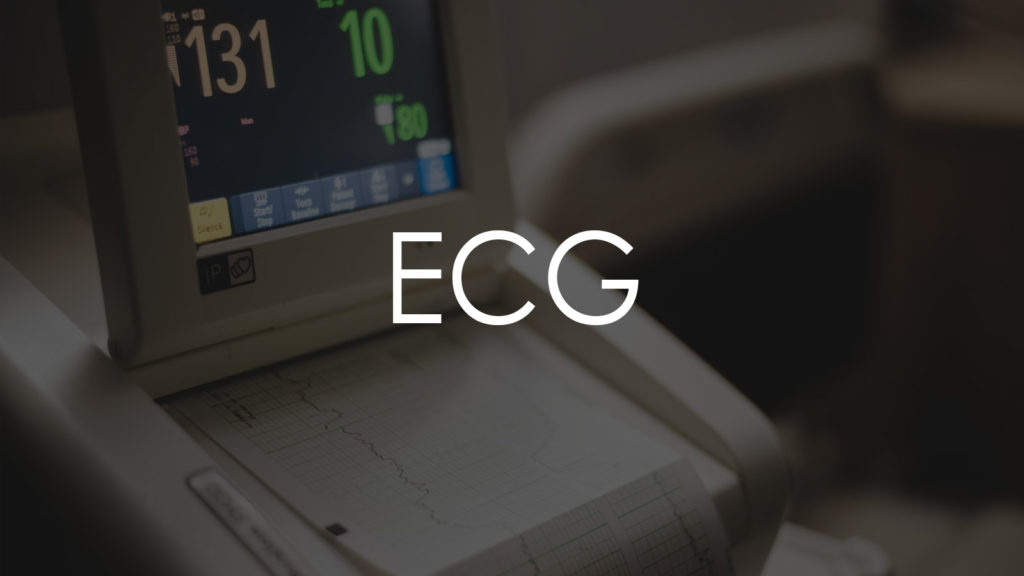An electrocardiogram (ECG or EKG) is a non-invasive diagnostic test that records the electrical activity of the heart. It is widely used to detect heart problems, monitor heart health, and guide treatment decisions. This test is crucial for diagnosing various cardiac conditions, such as arrhythmias, myocardial infarctions, and heart blockages. In this article, we will explore the purpose of an ECG, the procedure for conducting it, the interpretation of results, and important considerations when undergoing this test.

Why is it needed?
An ECG is necessary for several critical reasons:
- Diagnosing Heart Conditions: It helps identify conditions such as arrhythmias, myocardial infarctions (heart attacks), and heart blockages.
- Evaluating Symptoms: It is used to investigate symptoms like chest pain, shortness of breath, palpitations, dizziness, and fainting.
- Monitoring Heart Health: Regular ECGs can monitor the progression of heart conditions and the effectiveness of treatments.
- Preoperative Assessment: It evaluates heart health before surgery, especially in patients with a history of heart problems.
- Screening and Prevention: It is used in routine check-ups for people with risk factors for heart disease, such as high blood pressure, diabetes, and a family history of heart disease.
Procedure for taking the test
The procedure for conducting an ECG involves several steps:
Preparation
- Clothing: Patients are usually asked to remove clothing from the upper body and wear a hospital gown.
- Jewelry and Accessories: Remove any metal objects, including necklaces, earrings, and body piercings, as they can interfere with the ECG electrodes.
- Skin Preparation: The technician may clean the skin where the electrodes will be placed to ensure good contact.
Electrode Placement
- Electrodes: Small adhesive patches (electrodes) are attached to the skin on the chest, arms, and legs. Typically, 10 electrodes are used for a standard 12-lead ECG.
- Connection: The electrodes are connected to an ECG machine with wires that transmit the heart’s electrical signals to the machine.
Recording the ECG
- Resting State: The patient lies still on an examination table while the ECG is recorded. It is important to remain relaxed and avoid talking or moving during the test.
- Duration: The actual recording takes just a few minutes, although the entire appointment may take about 10-15 minutes, including preparation and electrode placement.
Completion
- Removing Electrodes: After the recording is complete, the electrodes are removed, and the patient can get dressed and resume normal activities immediately.
Interpretation of results
Interpreting ECG results involves analyzing the waveforms and patterns recorded on the ECG tracing. Here are the key components and what they signify:
P Wave
- Description: Represents atrial depolarization, the electrical activity associated with the contraction of the atria.
- Normal: Small, rounded wave preceding the QRS complex.
- Abnormal: Variations in shape or timing can indicate atrial enlargement or atrial arrhythmias.
QRS Complex
- Description: Represents ventricular depolarization, the electrical activity associated with the contraction of the ventricles.
- Normal: Narrow and sharp complex following the P wave.
- Abnormal: Widened or abnormal shapes can indicate ventricular hypertrophy, bundle branch blocks, or myocardial infarction.
T Wave
- Description: Represents ventricular repolarization, the electrical activity associated with the relaxation of the ventricles.
- Normal: Smooth, rounded wave following the QRS complex.
- Abnormal: Inverted or flattened T waves can indicate ischemia, electrolyte imbalances, or other cardiac issues.
ST Segment
- Description: The flat section between the end of the QRS complex and the start of the T wave.
- Normal: Should be level with the baseline of the ECG tracing.
- Abnormal: Elevation or depression can indicate myocardial ischemia or infarction.
PR Interval
- Description: The time between the onset of the P wave and the start of the QRS complex.
- Normal: 0.12 to 0.20 seconds.
- Abnormal: Prolonged PR interval can indicate first-degree heart block.
QT Interval
- Description: The time between the start of the QRS complex and the end of the T wave.
- Normal: Duration varies with heart rate, but generally 0.35 to 0.44 seconds.
- Abnormal: Prolonged QT interval can increase the risk of arrhythmias.
Important Considerations
When undergoing an ECG, several factors should be taken into account:
- Interference: Certain factors, such as body movement, electrical interference, or poor electrode contact, can affect the accuracy of the ECG.
- Medications: Inform the healthcare provider about any medications being taken, as some drugs can influence the ECG results.
- Follow-Up Tests: Abnormal findings may require additional testing, such as echocardiography, stress tests, or Holter monitoring, for further evaluation and confirmation.
- Risk Factors: Regular ECG screening is particularly important for individuals with risk factors for heart disease, such as high blood pressure, diabetes, or a family history of heart conditions.
Conclusion
An ECG is a vital diagnostic tool that provides valuable information about the electrical activity and overall health of the heart. It is non-invasive, quick, and widely accessible, making it an essential procedure in modern cardiology. Understanding the purpose of the test, the procedure involved, and the interpretation of results can help patients better prepare for the examination and understand the findings. Regular ECGs, particularly for individuals with heart conditions or risk factors, can significantly aid in early diagnosis and effective management of various cardiac diseases.